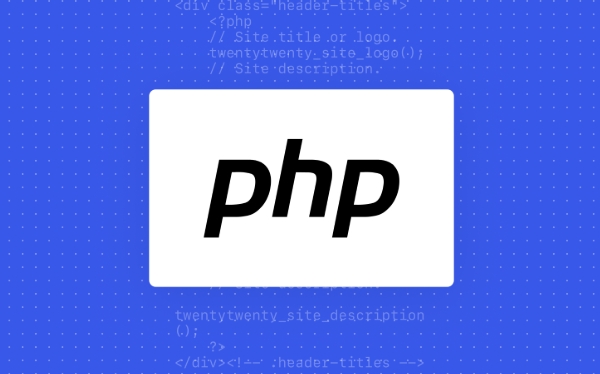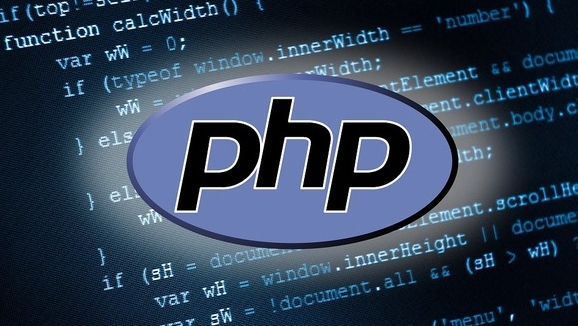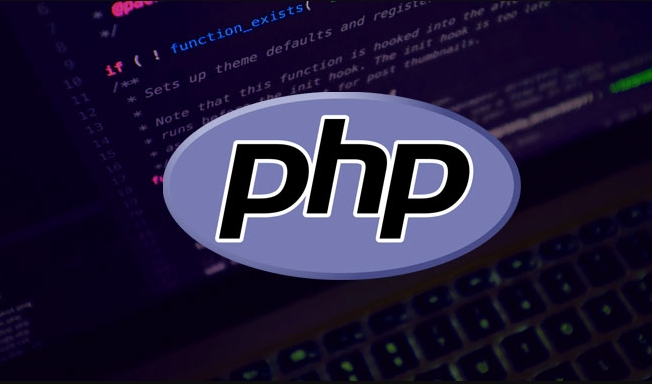The key to installing PHP extensions is to clarify the environment and source. 1. First determine the PHP installation method, which can be viewed through php -v and which php; 2. If you use Linux/macOS package manager to install PHP, use the corresponding commands such as apt, yum or brew to install the extension and restart the service; 3. If you install from the source code or need to customize the extension, you can install it by PECL and manually add extension=xxx.so to php.ini; 4. Under Windows, you need to download the matching DLL file, put it in the ext directory and enable it in php.ini. As long as you follow the steps, the installation process is not complicated.

Installing PHP extensions is not difficult, the key is to figure out your environment and where the extension comes from. Different systems and installation methods will be somewhat different, but the overall idea is similar.

1. Confirm your PHP installation method
Before you start, figure out how you installed PHP:

- Is it installed using the system's package manager (such as apt, yum, brew)?
- Or compiled and installed from the source code?
- Or use integrated environments like XAMPP, WAMP, MAMP?
This will affect how you install the extension later. If you are not sure, you can run php -v and which php in the terminal to see the path and version information.
2. Install the extension using the package manager (for Linux/macOS)
If you are installing PHP through the system package manager, the extension usually has corresponding packages. For example:

- Ubuntu/Debian:
sudo apt install php-xxx - CentOS/RHEL:
sudo yum install php-xxx - macOS (Homebrew):
brew install php@xxcorresponding extension
Common extension names are:
-
php-curl -
php-mysql -
php-mbstring -
php-xml
Don't forget to restart Apache or PHP-FPM after installation:
sudo systemctl restart apache2 # or sudo systemctl restart php-fpm
3. Install the extension using PECL (for custom installations)
If you are installing PHP from source, or want to install some extensions that are not in the system repository, you can use PECL:
- First confirm whether
php-pearis installed (PECL depends on it) - Then execute:
pecl install xxx - After the installation is complete, add
extension=xxx.soinphp.ini
For example, install the Redis extension:
pecl install redis
Then edit php.ini plus:
extension=redis.so
Sometimes you may need to manually specify the .so file path, especially if you have multiple PHP versions.
4. How to install PHP extension in Windows?
Generally, on Windows, php.ini is used to enable dynamic link library (DLL) files:
- Find the extended DLL file (the corresponding version can be downloaded from the PECL official website )
- Put
.dllinextdirectory of PHP - Add:
extension=php_xxx.dllinphp.ini
Note: Be sure to ensure that the DLL matches your current PHP version and thread-safe pattern, otherwise an error will be reported or even PHP startup failure will be caused.
Basically these are the operations. Although the steps seem a bit too many, as long as you understand your environment and follow the steps, the installation and extension are not complicated, but the details are easy to ignore.
The above is the detailed content of How to install PHP extensions?. For more information, please follow other related articles on the PHP Chinese website!

Hot AI Tools

Undress AI Tool
Undress images for free

Undresser.AI Undress
AI-powered app for creating realistic nude photos

AI Clothes Remover
Online AI tool for removing clothes from photos.

Clothoff.io
AI clothes remover

Video Face Swap
Swap faces in any video effortlessly with our completely free AI face swap tool!

Hot Article

Hot Tools

Notepad++7.3.1
Easy-to-use and free code editor

SublimeText3 Chinese version
Chinese version, very easy to use

Zend Studio 13.0.1
Powerful PHP integrated development environment

Dreamweaver CS6
Visual web development tools

SublimeText3 Mac version
God-level code editing software (SublimeText3)

Hot Topics
 php regex for password strength
Jul 03, 2025 am 10:33 AM
php regex for password strength
Jul 03, 2025 am 10:33 AM
To determine the strength of the password, it is necessary to combine regular and logical processing. The basic requirements include: 1. The length is no less than 8 digits; 2. At least containing lowercase letters, uppercase letters, and numbers; 3. Special character restrictions can be added; in terms of advanced aspects, continuous duplication of characters and incremental/decreasing sequences need to be avoided, which requires PHP function detection; at the same time, blacklists should be introduced to filter common weak passwords such as password and 123456; finally it is recommended to combine the zxcvbn library to improve the evaluation accuracy.
 How to combine two php arrays unique values?
Jul 02, 2025 pm 05:18 PM
How to combine two php arrays unique values?
Jul 02, 2025 pm 05:18 PM
To merge two PHP arrays and keep unique values, there are two main methods. 1. For index arrays or only deduplication, use array_merge and array_unique combinations: first merge array_merge($array1,$array2) and then use array_unique() to deduplicate them to finally get a new array containing all unique values; 2. For associative arrays and want to retain key-value pairs in the first array, use the operator: $result=$array1 $array2, which will ensure that the keys in the first array will not be overwritten by the second array. These two methods are applicable to different scenarios, depending on whether the key name is retained or only the focus is on
 PHP Variable Scope Explained
Jul 17, 2025 am 04:16 AM
PHP Variable Scope Explained
Jul 17, 2025 am 04:16 AM
Common problems and solutions for PHP variable scope include: 1. The global variable cannot be accessed within the function, and it needs to be passed in using the global keyword or parameter; 2. The static variable is declared with static, and it is only initialized once and the value is maintained between multiple calls; 3. Hyperglobal variables such as $_GET and $_POST can be used directly in any scope, but you need to pay attention to safe filtering; 4. Anonymous functions need to introduce parent scope variables through the use keyword, and when modifying external variables, you need to pass a reference. Mastering these rules can help avoid errors and improve code stability.
 How to handle File Uploads securely in PHP?
Jul 08, 2025 am 02:37 AM
How to handle File Uploads securely in PHP?
Jul 08, 2025 am 02:37 AM
To safely handle PHP file uploads, you need to verify the source and type, control the file name and path, set server restrictions, and process media files twice. 1. Verify the upload source to prevent CSRF through token and detect the real MIME type through finfo_file using whitelist control; 2. Rename the file to a random string and determine the extension to store it in a non-Web directory according to the detection type; 3. PHP configuration limits the upload size and temporary directory Nginx/Apache prohibits access to the upload directory; 4. The GD library resaves the pictures to clear potential malicious data.
 Commenting Out Code in PHP
Jul 18, 2025 am 04:57 AM
Commenting Out Code in PHP
Jul 18, 2025 am 04:57 AM
There are three common methods for PHP comment code: 1. Use // or # to block one line of code, and it is recommended to use //; 2. Use /.../ to wrap code blocks with multiple lines, which cannot be nested but can be crossed; 3. Combination skills comments such as using /if(){}/ to control logic blocks, or to improve efficiency with editor shortcut keys, you should pay attention to closing symbols and avoid nesting when using them.
 How Do Generators Work in PHP?
Jul 11, 2025 am 03:12 AM
How Do Generators Work in PHP?
Jul 11, 2025 am 03:12 AM
AgeneratorinPHPisamemory-efficientwaytoiterateoverlargedatasetsbyyieldingvaluesoneatatimeinsteadofreturningthemallatonce.1.Generatorsusetheyieldkeywordtoproducevaluesondemand,reducingmemoryusage.2.Theyareusefulforhandlingbigloops,readinglargefiles,or
 Tips for Writing PHP Comments
Jul 18, 2025 am 04:51 AM
Tips for Writing PHP Comments
Jul 18, 2025 am 04:51 AM
The key to writing PHP comments is to clarify the purpose and specifications. Comments should explain "why" rather than "what was done", avoiding redundancy or too simplicity. 1. Use a unified format, such as docblock (/*/) for class and method descriptions to improve readability and tool compatibility; 2. Emphasize the reasons behind the logic, such as why JS jumps need to be output manually; 3. Add an overview description before complex code, describe the process in steps, and help understand the overall idea; 4. Use TODO and FIXME rationally to mark to-do items and problems to facilitate subsequent tracking and collaboration. Good annotations can reduce communication costs and improve code maintenance efficiency.
 How to create an array in php?
Jul 02, 2025 pm 05:01 PM
How to create an array in php?
Jul 02, 2025 pm 05:01 PM
There are two ways to create an array in PHP: use the array() function or use brackets []. 1. Using the array() function is a traditional way, with good compatibility. Define index arrays such as $fruits=array("apple","banana","orange"), and associative arrays such as $user=array("name"=>"John","age"=>25); 2. Using [] is a simpler way to support since PHP5.4, such as $color






